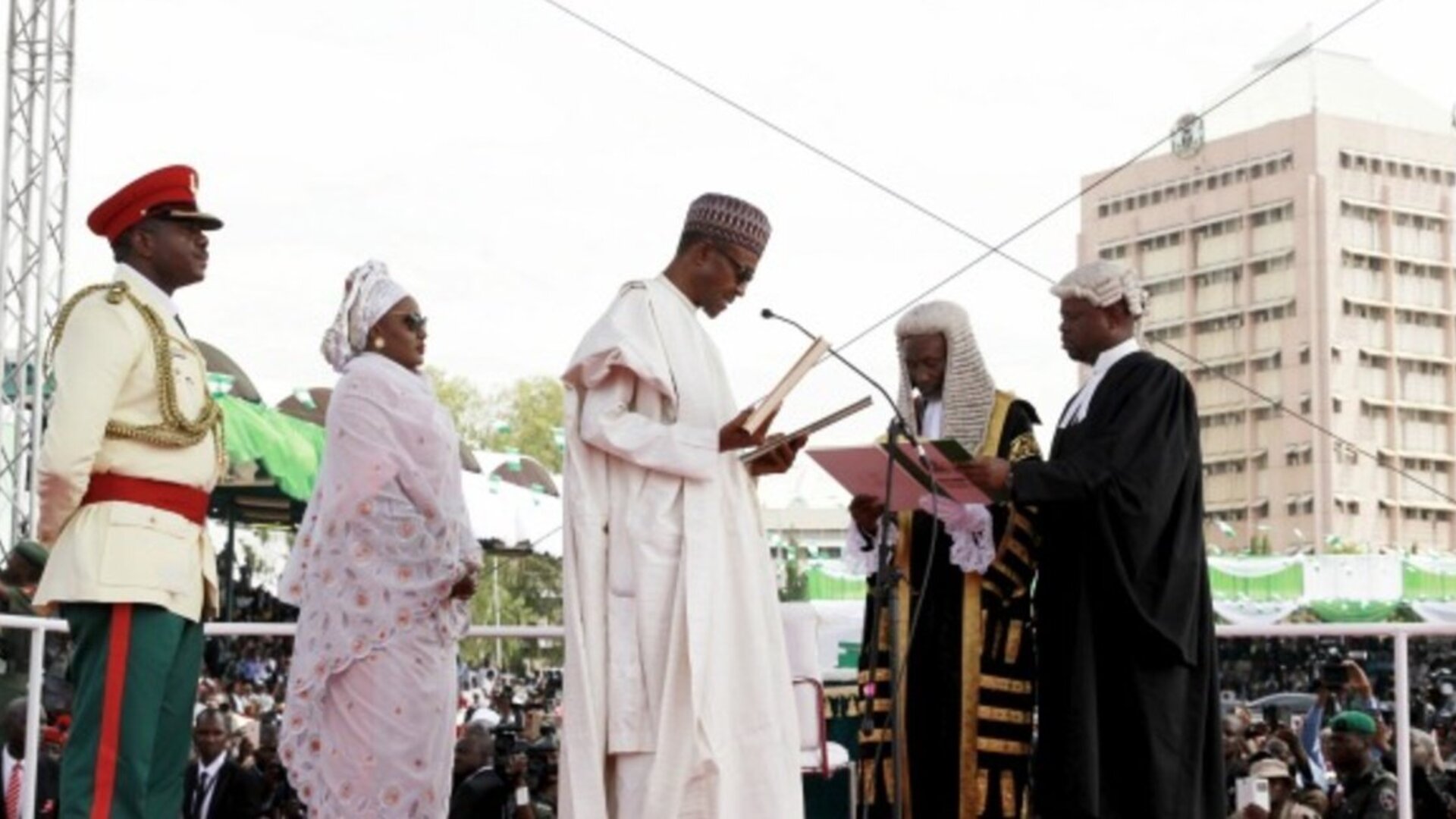
How Winners Emerge
Most elections around the world simply require the winning candidate to receive the highest number of votes in order to get elected. However, winning some elections requires fulfilling certain additional provisions to ensure that the winning candidate has a significant amount of support across the country. This is the case in Nigeria, where presidential and gubernatorial candidates are required to receive at least 25% of the votes in two-thirds of the states, or local governments in the case of states, in order to be declared winners and form the next government as per Section 134 (2) of the Nigerian constitution for the presidential race and Section 179 (2) for governorship races.
Where can we see this in prior presidential elections?

In 1999, there were only two candidates – Olusegun Obasanjo of the People’s Democratic Party (PDP) and Olu Falae of the Alliance for Democracy (AD) and All People’s Party (APP). Obasanjo met the first requirement by polling 18.7 million votes to Falae’s 11.1 million. He also met the second requirement by receiving over a quarter of the votes in 32 states and the FCT, which ensured that he was able to win the election.
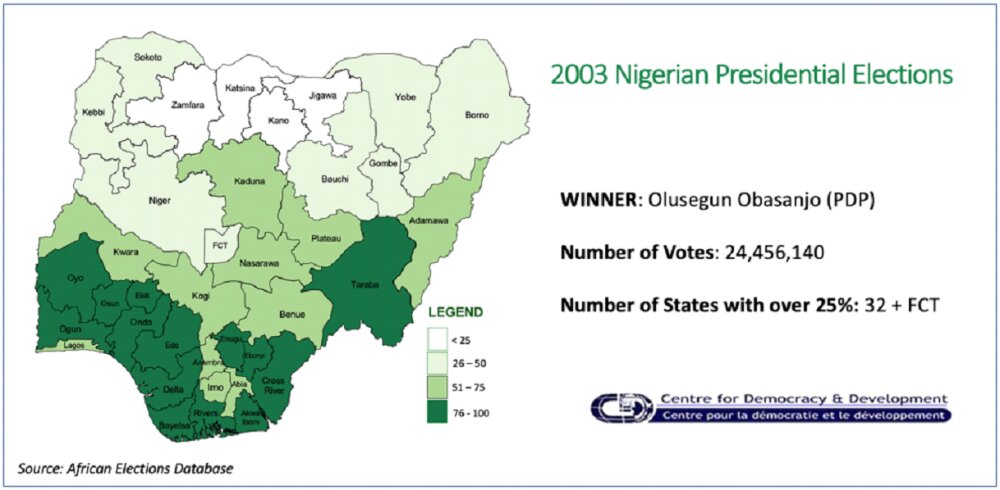
In 2003, Olusegun Obasanjo of the PDP sought a second term, and his major opponent was Muhammadu Buhari of the All Nigeria People’s Party (ANPP). Obasanjo met the first requirement by receiving 23.9 million votes to Buhari’s 12.5 million votes. He also met the second requirement by replicating his 199 performance of securing a quarter of the votes in 32 states and the FCT.
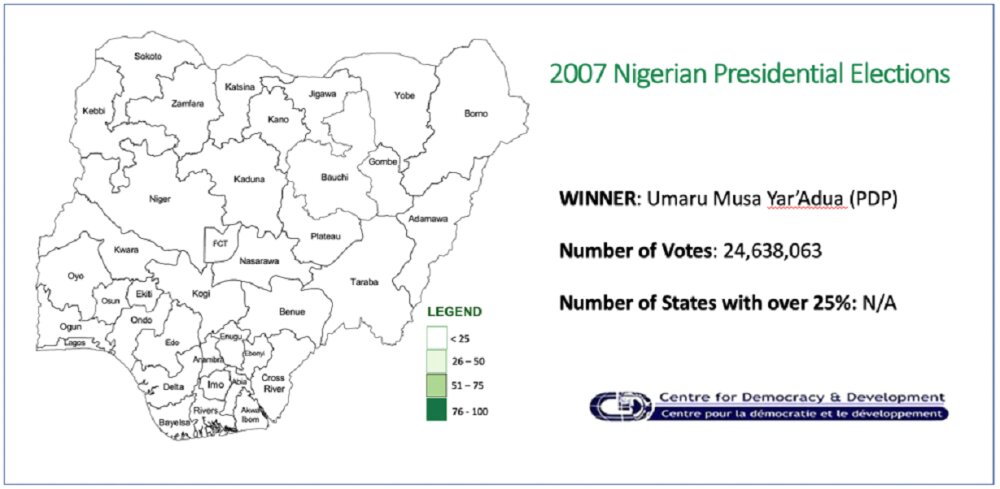
Unfortunately, the 2007 election results were not published in the necessary detail for in-depth analysis amidst allegations of widespread rigging. Umaru Musa Yar’Adua, the nominee of the PDP, received 24.6 million votes to be returned elected. Buhari, again on the platform of the ANPP, received just 6.6 million votes. While Yar’Adua easily passed the first requirement, the lack of a detailed breakdown does not allow us to prove how he passed the second requirement.

In 2011, Goodluck Jonathan sought a full term as president after succeeding Yar’Adua who died in office. Buhari was the candidate of the Congress for Progressive Change (CPC), while Nuhu Ribadu, former chair of the Economic and Financial Crimes Commission (EFCC), was the nominee of the Action Congress of Nigeria (ACN). Jonathan, as the PDP nominee, received 22.6 million votes to defeat Buhari who received 12.3 million votes and Ribadu who polled just over 2 million votes. Jonathan fulfilled the second requirement by receiving over a quarter of the vote in 32 states and the FCT, which ensured his election to a full term as president.
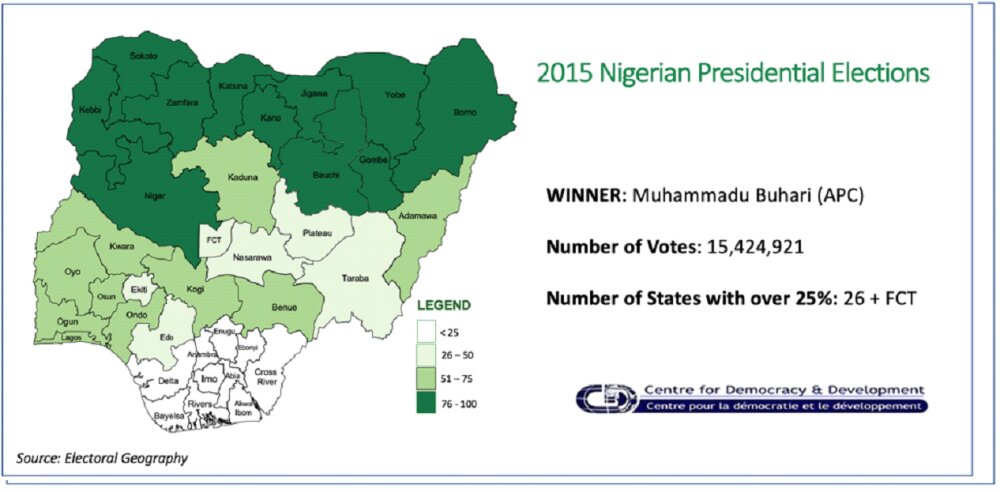
In 2015, Buhari was the nominee of the newly formed All Progressive’s Congress (APC) and faced incumbent President Jonathan. This time, Buhari was victorious and passed the first requirement by polling 15.4 million votes to Jonathan’s 12.9 million votes. He was able to pass the second requirement by receiving over a quarter of the vote in 26 states and the FCT.
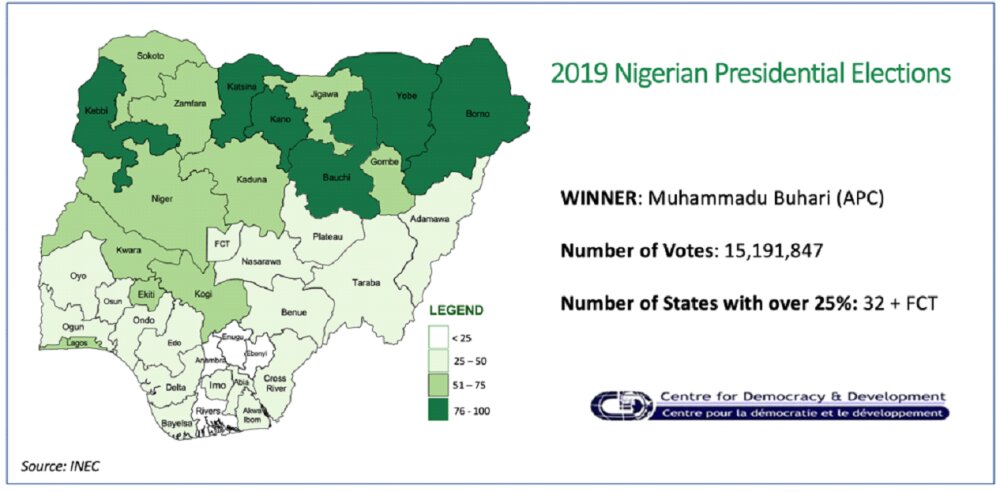
In 2019, President Buhari sought a second term as the APC nominee and faced former vice-president Atiku Abubakar who was the PDP nominee. Buhari passed the first requirement by receiving 15.2 million votes to 11.3 million votes for Atiku. He also passed the second requirement by receiving over a quarter of the votes in 33 states and the FCT.
What happens if a candidate does not pass both requirements?
Provisions of Section 134 of the Constitution set out what happens if a candidate does not pass both requirements to be elected president. According to Section 134 (3), in a default of a candidate duly elected in accordance with subsection (2), there shall be a second election. This election will be contested by two candidates who are:
- The candidate who scored the highest number of votes
The candidate who has a majority of votes in the highest number of states. If there is a tie here, then the candidate among them who had the most votes in the election will be the second candidate. - During this election, the existing provisions still apply – where a candidate must have the majority of votes cast and also receive over a quarter of the votes cast in at least two thirds of the states in the federation and the FCT to be declared the winner. However, if neither of the two candidates is able to fulfil both requirements, INEC is mandated to conduct a third election between the two candidates. This time, the candidate with the most votes will be returned as president-elect.
What does this mean for 2023?
The 2023 presidential elections will be contested by 18 candidates. It is important for these contestants and their supporters to note that even if their preferred candidate is able to receive the most votes in the election, they must ensure enough widespread acceptance by receiving over a quarter in two-thirds of the states and the FCT. It also puts in play the importance of relevant institutions working to ensure that existing challenges, ranging from insecurity to voter register complaints, are significantly addressed. This is because even the inability of an election in one state, or LGA, could lead to challenges over legitimacy and judicial interpretation. It is why understanding the constitutional provisions on how winners emerge will help inform their campaign approach and help correct any misunderstanding or misinformation when the results are announced. This will help ensure a smooth transition period that hopefully enables the next administration hit the ground running.
Afolabi Adekaiyaoja is a Research Analyst at the Centre for Democracy and Development.
